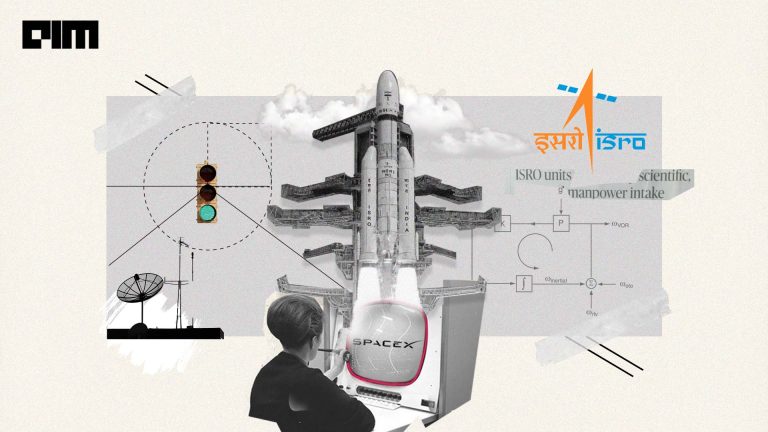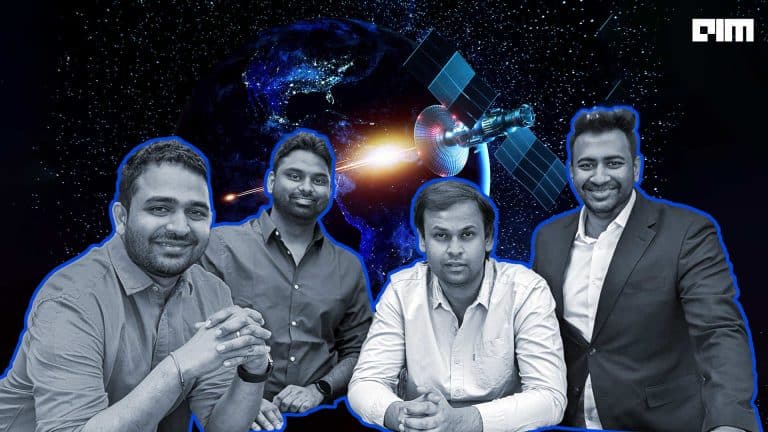|
Listen to this story
|
With KaleidEO pioneering the demonstration of deep learning-based algorithms to analyse imagery in orbit—India is slated to be amongst the early adopters of edge computing in space.
KaleidEO partnered with Australia-based Spiral Blue for the hardware and implementation support to run deep learning-based algorithms which demonstrated in-orbit image analysis, on images captured by Satellogic– a satellite constellation and data provider company based out of Uruguay.
Today, data storage devices, even those suitable for space applications, have become quite affordable and it’s feasible to have terabytes of storage capacity in space without exorbitant costs. Data storage is no longer a significant bottleneck in space computing.
“The problem here is not about storage, it’s about having access to information and that’s what edge solves—knowing and having access to information instead of storing data and not knowing when to use it and taking hours or even days to downlink and process it,” KaleidEO COO Arpan Sahoo explained.
The goal is to provide near-real-time access to valuable information rather than just accumulating data. This shift in approach is aimed at making data more actionable and responsive in space applications. “We’re trying to remove a lot of that hereditary processes and change the way we do it,” he added.
For those unaware, traditionally, satellite data was downloaded in its raw form and processed on the ground due to the large data sizes generated. However, recent developments in hardware and software have allowed for the processing of heavy images in space with greater power efficiency.
Edge computing in space is relatively new—with the European Space Agency showcasing these with its PhiSat-1in 2019. Advancements in hardware miniaturisation and increased processing power have enabled edge computing in space.
What it Means for India
Having this capability holds significant importance for India, particularly in various sectors such as defence and agriculture. It enables timely decision-making processes that rely on data analysis and intervention. In the context of disaster management, edge computing can rapidly assess situations, such as assessing road conditions after a natural disaster, allowing for efficient deployment of disaster management teams.
In strategic applications, edge computing plays a crucial role in monitoring neighbouring assets and changes in real time. For example, it can continuously analyse data to track objects or vehicles entering a specific territory.
“Every 15 minutes you keep on taking new photos and analysing it and understand how many new vehicles have entered the territory or not,” Sahoo said.
Overall, edge computing offers the potential for India to leverage data more effectively across various sectors, enabling quicker and more informed decisions that can have a substantial impact on disaster response, security, and other critical areas.
“Our capability has unique capabilities for domestic national security and disaster management requirements for Governments which will revolutionize the way we collect, process, analyze and downlink imagery and insights from satellite data for the benefit of all,’ Sahoo said, hinting at collaborations with government partners.
Data Complexity Galores
KaleidEO’s tech stack relies on image processing enabled by edge computing in space, which includes handling environmental factors like atmospheric conditions. For this, the company uses remote sensing, computer vision and deep learning techniques that can adapt to different situations which address image quality and variability changes.
After preprocessing, the company uses neural network architectures to extract specific information from images, such as identifying roads, water bodies, or vehicles. However, data accuracy and space environment challenges are first addressed. This, without saying, also comes with hardware challenges and requires huge computing power.
NVIDIA to the Rescue
KaleidEO collaborated with hardware partners to modify and interface with off-the-shelf hardware, like Nvidia Jetson. Hardware like CPUs, GPUs and Vision Processing Units, provide distinct advantages. While CPUs excel at single-task processing with high clock frequencies, GPUs are capable of parallel processing, making them suitable for image processing and similar tasks.
“For something as simple as heavy number crunching, like matrix manipulation, you would put it directly through a CPU,” said Sahoo. However, he said if you are building a very convoluted network which has a lot of abstractions, you’ll need GPUs to scale and optimise.
Edge Computing in Space
In the past couple of years, hyper scalers like AWS and Microsoft and even companies like IBM amongst others have developed similar capabilities. Sahoo explained that in terms of capabilities, their solution is in the same ballpark as others because they work with similar hardware architectures, including Nvidia and AMD processors.
The real innovation in this field is centred around processing efficiency and speed. Faster data processing is critical because time is of the essence in space-related operations. They are all striving to be more efficient, which has far-reaching effects. “For instance, processing data more quickly can lead to cost savings,” explained Sahoo.
“Data saving in the commercial space means a lot because, suppose, if a data was 10 GB and you have reduced it to a few MB, now the 9.9 GB that you’ve saved for down-linking translates into operational cost being saved,” he added.
Reducing data sizes through edge computing can significantly benefit customers in terms of cost savings and accessibility, particularly when dealing with intermediaries in such markets. “The cost-benefit means your customers are getting that benefit of lower cost barrier to enter into the space domain. So we are able to service more customers in efficiently processing the data, for example, in agriculture, it’s a very price sensitive market,” said Sahoo, saying that the launch of SatSure’s (KaleidEO’s parent company) satellites will further bolster their capabilities, eliminating the need for partnerships for imagery or hardware.
Sahoo, like others, believes that recent advancements point to the emergence of a self-sustaining space ecosystem in India, distinct from its role solely as a support to ISRO.



















































































